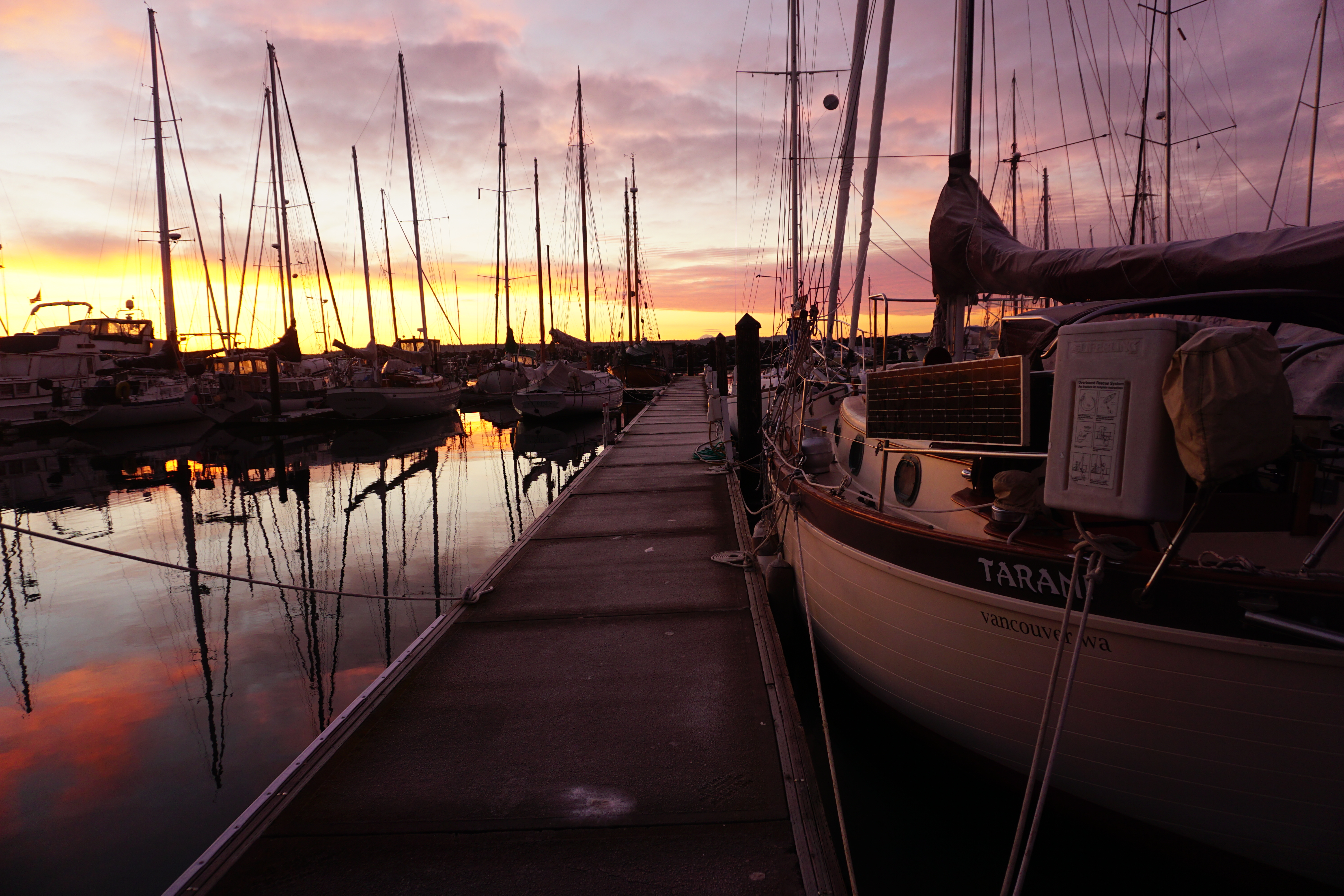We left the sailboat anchored in a minefield of crab pots and just a stone’s throw away from a mud flat. It was close to low tide and the water had dropped about 18 vertical feet revealing lots of mud and lots of activity amongst the birds. Ducks were busy swimming and diving. Gulls were beach combing for tasty treats. A couple eagles were perched on crab pots that had been exposed. As we rowed towards shore the flies and gnats tested us as prey and found us to be good. We found a little creek winding up through the mud and went up until we grounded then pulled the dinghy across the mud, every step required a hand assist to the boot to break the suction of the brown over black sticky ooze. We tied off the dinghy to a barnacle rock, shouldered our packs and set off.
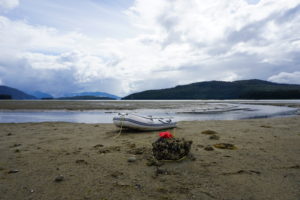
While in Petersburg a couple days before we kept seeing these signs for Farragut Farm. The grocery stores and the little restaurants seemed to be proud that they were supporting a local farm. The flyers indicated that everything was organic, fresh and tasty, and grown only 24 miles away. The flyers also described the farm as off-the-grid and fossil-fuel free. It sounded very cool.
Later that evening while Karen was working on dinner I was sent for ice. It was not a far walk to Kito’s Kave, a classic fisherman’s dive bar and liquor store. When I got there I realized I was thirsty. When the barkeep set my pint down I saw that right under my elbows, under the glass, was an old chart for Farragut Bay. Surely this was a sign but it took another pint for me to be sure of that. Surprisingly, I remembered the ice on my way out. I described my serendipitous experience to Karen and she agreed. We must seek out Farragut Farm.
We had little information to go on, the internet connection at Kito’s had only mentioned that the Farm was near Francis Anchorage. This was on the chart and the next day we found ourselves heading into an area that is only described in our cruising guidebooks as somewhere with extensive shoals. We pointed our binoculars landward and saw a cabin with a wind generator on a pole next to it. This could be the place for an off-the-grid operation. There was a small tongue of slightly deeper water that indented the mudflats and was charted as 4 fathoms deep. As we slowly worked our way in we found ourselves surrounded by dozens of crab pots, carefully we dropped anchor in about 30 feet.
When I write about climate change its much more enjoyable to focus on positive examples of adaptation. It is easy to get gloomy by reporting on the latest research that indicates change is happening faster than was thought possible only a couple decades ago. It sometimes seems an exercise in frustration to remind how we must abandon the burning of fossil fuels that subsidizes the unsustainable lifestyles that most of us live. Instead its much more fun to take a close look at ways that communities are working towards resilience. It can truly inspire hope in humankind to find places and people that could thrive in a fossil-fuel-free future. Farragut Farm sounded like it might be one of these places.
Southeast Alaska’s residents have many resources to draw upon. Fat fish swim in the sea, crabs and prawns are plentiful. Deer, elk, moose and bear inhabit the forests. However, they are also heavily reliant on supplies delivered by tug and barge and aircraft. Petersburg, it seems was making a move towards increased resilience by supporting local production of non-meat food. A salad and some nice fresh potatoes goes great with a sweet salmon.
Over the mudlfats, across little tidewater creeks and sandbars then we were into the grasses. We were working our way towards the wind generator but the closer we got the taller the grasses got.The footing was tricky, you couldn’t see where your feet were and there were lots of little sinkholes and small driftwood. Eventually we found an electric fence and followed it to a corner of the property. It became apparent that this was no farm, no one seemed home and the grass was up to our shoulders. I offered that we’d given it a good try and maybe we should turn back. Karen suggested we go forward just a bit to a line of trees up ahead. Just past the trees we found a little trail in the mud and then we caught a glimpse of some greenhouses and knew we’d found it.
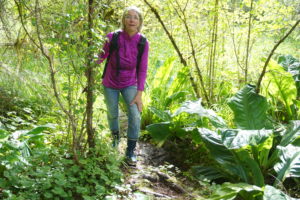
The trail towards the farm followed planks laid down in the mud through a wood that had a rain forest feel to it. Eventually we emerged at another electric fence at the edge of the farm. We could hear a BBC broadcast playing on a radio somewhere. “Hellooo”, we called several times before someone heard us. It must have been a bit of a shock to have something on two legs emerge from the brush but Marja greeted us warmly and invited us to duck under the hot wire.
She gave us a tour of the place and we met her husband Bo. The place was beautiful. Crops were mostly in raised beds, weed-free and very healthy looking. Accents of orange and red and every color. Hummingbirds buzzed around, solar panels in abundance were mounted on the house and outbuildings to power refrigeration and provide for pressurized water. The grassy meadows ran away to the north where the forest met them at the base of the snow capped mountains. It truly seemed we had stumbled into a garden of eden.

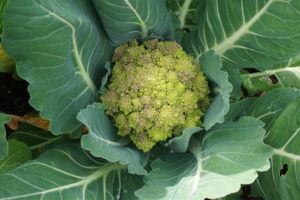
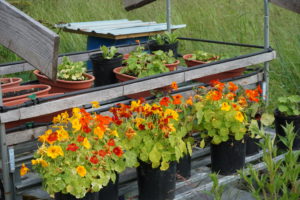
We asked a few questions but we knew that they, like farmers everywhere, were busy. Indeed, they had a big market coming up in just a few days and we didn’t want to take up too much of their time. We apologized for showing up out of the blue (or green as it were) and we thanked them for showing us around. They suggested a better way back to our boat was to follow the trail that ran along the tidewater slough behind the farm. They told us to be careful not to get between a mama moose and her calf. OK, then.
We passed by their sailboat on the way back, high and dry on the mud. This is how they transport their goods to market. Old school. We found our dinghy also high and dry and had to drag it back across the mud to the water’s edge. After dinner we felt pretty tired and settled down to read and drift off for a nap in our bunks. A little while later, from the depths of quasi-dreamland I heard some kind of bird making a plaintive cry that sounded almost human. It sounded like it was calling, “Helloo”. It got louder and clearer and I went on deck to find Bo in his rowboat. He wanted to know if we would be interested in helping them get their harvest together for their upcoming market. Without hesitation we both agreed, Karen had been sorely missing her garden and I wanted to learn more about how they make it work. It seemed like it would be a good change of pace.
Hard work was indeed a change of pace. We arrived about 9:00 and were put to work right away. First thing that needed doing was inspecting, weighing and bundling multiple varieties of kale. Some were for the Petersburg market and some were to be sent to Juneau. Bo made sure I inspected each and every leaf for defects, bug holes, discoloration, etc. But thing was the kale was practically perfect; shiny, glossy, clean. After banding the kale went right into coolers so that the stems could rest in water and stay hydrated.
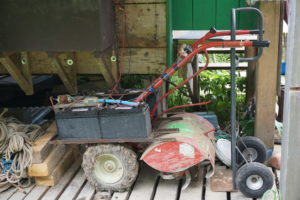
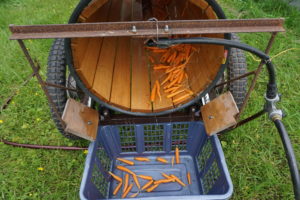
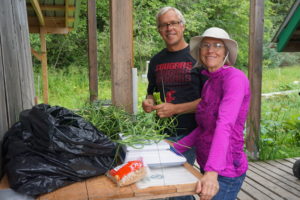
Marja put Karen to work harvesting snap peas and garlic scapes. The peas were weighed and placed into 8 ounce and 18 ounce clear bags. The garlic scape is the tall part of the plant from which the plant tries to produce a flower. However this takes energy that the farmer would rather see go into larger bulbs. As it turns out the garlic scape is a very tasty and versatile product. Marja was into making pesto with it but its also great in stir fries, etc. (I put it into mason jar pickled kimchi carrots.) After I finished with the kale I helped Bo harvest little baby candy carrots. These got plunked into the veggie washer machine until they were cleaner than clean and then packed into little 1/2 pound bags for people to munch on as walk-around snacks for at Petersburg. At about lunch we were treated to a fabulous salad topped with smoked salmon. When the tide was high enough Marja had to leave to fetch the skiff up the slough so the product could be loaded and transported out to the sailboat on the mud.After lunch it was back to work, more harvesting, weighing and packing. At the end of the day we even got to weed the onion bed. It felt great to dig through the soil rich with compost that includes shells from crabs and barnacles.
Back on our boat we were that good kind of tired that comes after a decent day’s work, and we were energized by knowing that people like Bo and Marja are out there making it work. Southeast is lucky to have Farragut Farm. Special thanks for the bags of fresh goodness they gave us as we said goodbye. For more information see their Facebook page, or this article in Edible Alaska: http://ediblealaska.ediblefeast.com/shop/off-the-grid-Alaska%27s-farragut-farm
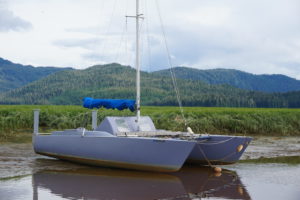
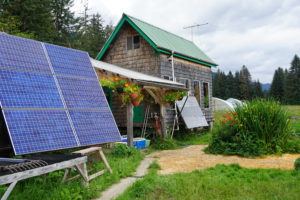
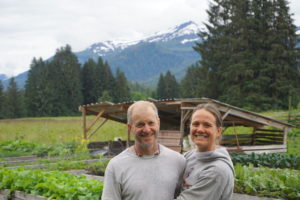
Support your local farmers! Especially those working off the grid and transporting goods by sailboat!
